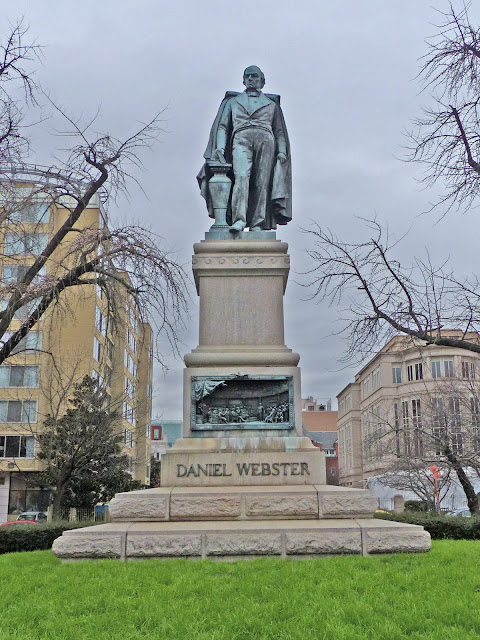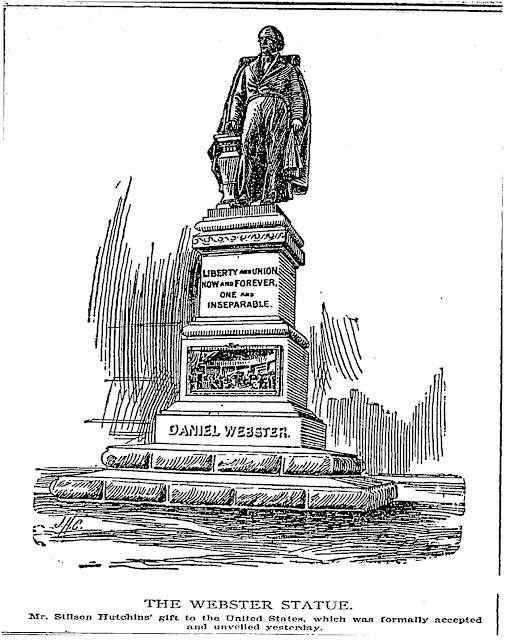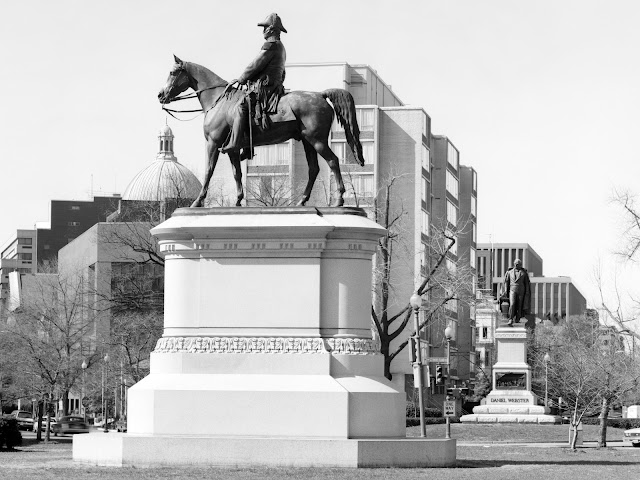
One of New England's most brilliant sons, Webster (1782—1852) served the new republic in many important roles, though never achieving the presidency, which at times seemed to be just within his grasp. He was a member of Congress and of the Senate for a total of twenty-three years, from 1823 to 1841 and again from 1845 to 1850. Throughout his public career he was a staunch supporter of the supremacy of the Union, debating remorselessly against states' righters who wished to loosen ties with the central government. Friends and foes alike admired him as one of the most gifted of American orators. As secretary of state, an office that he held twice, he completed settlement with England of the Northeast Boundary dispute, which after years of controversy established the present boundary between Maine and New Brunswick, Canada. Webster's most famous legal activity was his defense in the Dartmouth College case. New Hampshire had attempted to assert ownership of this private college and convert it to a state-owned university. The case eventually reached the Supreme Court, which made one of its most significant decisions on the validity of contracts. George III's charter to Dartmouth College was a contract, the Court held, and states could pass no laws infringing a contract.
Standing on a pedestal as massive and rugged as his New Hampshire hills, the 12-foot statue of Daniel Webster looks eastward at Scott Circle. The figure is in bronze and portrays Webster in a characteristic pose, his features sternly set, His shoulders are thrown back in a defiant manner, as if in answer to a challenge. In his right hand is a book of reference resting on a stand. The total height of the pedestal and statue is 30 feet.
The relief panel on the front of the pedestal depicts Webster's famous reply to Hayne, realistically portrayed except for the eagle flying over dragging an American Flag.
A quote from that speech is barely visible on the pedestal above the panel.
Stilson Hutchins the founder of the Washington Post commissioned this statue and the Post advocated for its erection. An article on the centenary of Daniel Webster's birth in 1882 announced that a meeting would be held in Willard Hall to discuss erecting a monument to Webster. Here's the accompanying image of the proposed statue. Read the Post Article here.
as well as this more typical encyclopedia sketch.
Vachel Lindsey wrote this about Daniel Webster.
THE farm is still there at Marshfield, Mass., and I wouldn't be a bit surprised if the man were still there, too — he was always an unquiet spirit. It is true that he has been dead for eighty-seven years, but that wouldn't make very much difference to his kind of man. There are certain human beings who assume legendary proportions while they are still alive. They get the same kind of stories told about them that are told of all folk-heroes, and the stories go on, by word of mouth, through the years, Daniel Webster is one of these.
He wrote The Devil and Dan Webster, a fictional account of a farmer who strikes a deal with the Devil and is rescued by Webster.
Read Webster's poem on the death of his son Charles, and read Mrs. Webster's reply.
Webster's punch recipe appeared in the Washington Post on December 2, 1888, Martha Stewarts version is online.












No comments:
Post a Comment